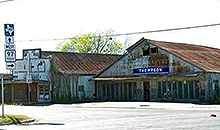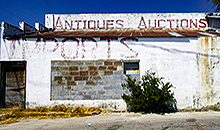Main Menu
Atascosa County Data
Atascosa County Communities & Places
Genealogy & History Links by USGHN
Important Atascosa County Addresses
Sponsors
Atascosa County Neighbors
Bexar County, Texas
Frio County, Texas
Karnes County, Texas
La Salle County, Texas
Live Oak County, Texas
McMullen County, Texas
Medina County, Texas
Wilson County, Texas
Other Websites
Welcome to Atascosa County Texas Genealogy & History Network!
Welcome to the Atascosa County, Texas Genealogy & History Network. Our purpose is to provide visitors with free resources for genealogical and historical research. To share your genealogy or history information, send an email to txghn@outlook.com and we will happily include it here. For other Texas Counties, visit the Texas Genealogy & History Network state website and go to the appropriate county. Thanks for visiting and good luck with your research! |
|
About Atascosa County, Texas...

Atascosa County is south of San Antonio in the Rio Grande Plain region of south central Texas. Jourdanton, the county seat, is thirty-three miles south of San Antonio.
Indians of the Coahuiltecan group occupied this region for several thousand years before the arrival of Spanish explorers in the sixteenth century. After the arrival of Europeans, most of these early residents succumbed to disease, intermarried, or were annihilated by Comanche and Apache invasions. Native Americans in Atascosa County after white settlement began were primarily Lipan Apaches and Comanches.
Families from northern Mexico established ranches in the area by the middle of the eighteenth century. The name Atascosa, "boggy" in Spanish, was used to describe the area as early as 1788. After the Texas Revolution, most of the Mexican ranches were broken up, but the first white settlers did not arrive until the late 1840s.
 The area was sparsely settled by the mid-1850s, and in 1856 the county was marked off from Bexar County. The first county seat, Navatasco, was established in 1857. In 1858 Pleasanton, a newly founded community, became county seat, and a new courthouse was constructed. Settlers continued to trickle in, but the threat of Indian attack, poor roads, and the area's general isolation kept the population low.
The area was sparsely settled by the mid-1850s, and in 1856 the county was marked off from Bexar County. The first county seat, Navatasco, was established in 1857. In 1858 Pleasanton, a newly founded community, became county seat, and a new courthouse was constructed. Settlers continued to trickle in, but the threat of Indian attack, poor roads, and the area's general isolation kept the population low.
On the eve of the Civil War subsistence farming and cattle ranching were the dominant occupations. Because of its isolation Atascosa County was little touched by the Civil War. Some Atascosa County residents fought for the Confederacy, but the way of life for most residents changed little during the war years.
After the war, cattle ranching took center stage, and during the late 1860s the number of livestock increased sharply. The population also increased rapidly during the postbellum years. Many of the new settlers were recent immigrants, including a sizable number of English and Germans. After 1880 the  number of immigrants from Mexico also grew steadily, and by the turn of the century Mexicans made up the largest number of foreign-born residents.
number of immigrants from Mexico also grew steadily, and by the turn of the century Mexicans made up the largest number of foreign-born residents.
Many of the new residents arrived by railroad. In 1881 an extension of the Great Northern Railway was built through the extreme northern corner of Atascosa County, and the first railroad station in the county was located at Lytle. The influx of new settlers in turn brought a rapid increase in the number of farms and helped boost the agricultural economy. During the 1870s and 1880s corn was the principal cash crop, but during the late 1870s cotton was introduced, and by 1900 it had become the leading farm shipment.
In 1910 the residents of the county voted to make Jourdanton the county seat, and in 1912 a new mission-style courthouse was constructed, which is still in use. Partly because of the rapidly growing population, land prices showed a marked increase between 1910 and 1929, and many new farmers found it impossible to buy land.
 Oil was discovered in 1917, and oil revenues helped some cash-strapped farmers and ranchers to survive the depression years, but the farming economy did not fully recover until after World War II. Humble Pipe Line Company established operations in Atascosa County in 1927, but the oil industry did not begin in earnest until the opening of Imogene and West Imogene fields in the 1940s. Diverse Humble operations in the Jourdanton area in the 1950s included gasoline, propane, butane, natural gasoline, and natural gas, all of which continued to be productive in the mid-1990s.
Oil was discovered in 1917, and oil revenues helped some cash-strapped farmers and ranchers to survive the depression years, but the farming economy did not fully recover until after World War II. Humble Pipe Line Company established operations in Atascosa County in 1927, but the oil industry did not begin in earnest until the opening of Imogene and West Imogene fields in the 1940s. Diverse Humble operations in the Jourdanton area in the 1950s included gasoline, propane, butane, natural gasoline, and natural gas, all of which continued to be productive in the mid-1990s.
Hunters are attracted to the county, particularly during the fall and winter deer seasons. Other leading attractions include the Poteet Strawberry Festival, Jourdanton Days Celebration, and the Cowboy Homecoming and Rodeo in Pleasanton.
The county has a total area of 1,221 square miles, of which 1,219 square miles is land and 2 square miles  (0.2%) is water. The population recorded in the 1860 Federal Census was 1,578. The 2010 census recorded 44,911 residents there.
(0.2%) is water. The population recorded in the 1860 Federal Census was 1,578. The 2010 census recorded 44,911 residents there.
Neighboring counties are Bexar County (north), Wilson County (northeast), Karnes County (east), Live Oak County (southeast), McMullen County (south), La Salle County (southwest), Frio County (west), and Medina County (northwest). The county seat is Jourdanton. Other communities in the county include Charlotte, Lytle (partly), Pleasanton, Poteet, Christine, Leming, Amphion, Campbellton, Kyote, La Parita, McCoy, Peggy, Rossville, South Savannah Heights.
Atascosa County, Texas Records
Birth Records - The Texas Department of State Health Services has records from 1903 to present. Records for the last 75 years considered private and will only be provided to certain individuals. To obtain current information on who may obtain a record, how to submit a request and an official request form, see the Texas Department of State Health Services website or write to Texas Vital Records, Department of State Health Services, P.O. Box 12040, Austin, TX 78711-2040.
For older birth records you will have to write to the County Clerk of the applicable county. The existence of birth records prior to 1903 will vary widely from county to county. Local historical societies and genealogy collections in local libraries may be able to provide some information.
Death Records - The Texas Department of State Health Services has records from 1903 to present. Records for the last 25 years considered private and will only be provided to certain individuals. To obtain current information on who may obtain a record, how to submit a request and an official request form, see the Texas Department of State Health Services website or write to Texas Vital Records, Department of State Health Services, P.O. Box 12040, Austin, TX 78711-2040.
Marriage Records - The Texas Department of State Health Services can provide a verification letter of marriage for Texas marriages from 1966 to present. This is NOT a marriage license. To obtain a certified copy of a marriage license you must contact the County or District Clerk in the county or district where the marriage took place.
Local historical societies and genealogy collections in local libraries may be able to provide some information.
Divorce Records - The Texas Department of State Health Services can provide a verification letter of divorce for Texas divorces from 1968 to present. This is NOT a copy of the divorce decree. To obtain a certified copy of a copy of the divorce decree you must contact the County or District Clerk in the county or district where the divorce took place.
Local historical societies and genealogy collections in local libraries may be able to provide some information.




